Needle here. I thought it was only appropriate that for a blog called Zone Reads, I write an analysis of the Zone Read play, and how teams use it and defend against it.
So I’ve finally gotten to spend some time sitting back and enjoying the spectacle that was Robert Griffin III of 2012. After watching the film, I came to a surprising conclusion: Despite all of the greatness that RG3 showed, the biggest surprise I saw was other teams’ inability to adapt to the zone read.
I, for one, believe in the importance of scheme, and have a lot of praise for coaches who can adjust rather quickly and find weaknesses in certain schemes. For example, the Dolphins rocked the Patriots with the pseudo-single wing scheme that is known as the Wildcat. That kind of team performance had yet to be repeated– until last year, when the new breed of QBs brought the zone read to the NFL. Though I put the Wildcat single-wing and the Spread Offense Zone Read into two separate categories, the concept of using scheme to gain a man advantage in the running game is the same. With that said, I want to look at three teams’ attempts to stop this scheme.
Quick note: While I have watched Colin Kaepernick and Russell Wilson run their offense, I’m focusing solely on Griffin, as I want to keep this analysis consistent and to the point.
We’ll be looking at three different teams who tried to stop the Redskins: the Vikings, the Giants, and the Cowboys (and, believe it or not, a woeful performance from Demarcus Ware).
Week 6: Vikings vs Redskins
Here we see our typical pistol formation. We have our pistol back (#16), a “queen” fullback (#46) and a “king” fullback/wing (#84) that is playing behind the guard. A formation that the Vikings have seen on film plenty, I’m sure.
At this point we have the handoff. Our DT, circled red, is playing the dive. Our black-circled defender is playing the QB, and our two orange-circled players are playing the pitch. This is the collegiate and high school way to defend the option. Go to a high school field on a Friday night or turn on college football on Saturday, and this is how every defense you watch will defend this formation and play.
Our DT (circled in black) has played the play fine. He is attacking the dive run. Our defender (the leftmost black circle) is now out of the play. He crashed down on the RB and lost outside containment. Griffin is now on the outside with a blocker taking out our orange circled player, who is supposed to take on the pitch man. With how the play has been executed, the Redskins actually have four players to take on two Vikings. A perfect situation for the Redskins and a dire one for the Vikings.
Griffin cuts it up and gets tripped up. Had he rode this out to the sideline, he would have kept his pitchman and had a chance to break it even further, but either way this ends up being a rather big play.
So what is the answer to the zone read option?
This is our traditional defense against the option. Our black rectangle defender has the dive. Our red rectangle player has the QB. Our orange rectangle has the pitchman. And our green is a free back. Now I know that, on this play, the Queen back takes the dive and our pistol back is in pitch position, but the defensive concept is for our defenders to be playing an area, not a man.
This is my proposed “fix.” The DT still has the dive. This will never change. Our outside backer still has the pitch man. This, also, will never change. My proposed change is with the responsibilities of the inside linebacker. We’re going to allow the defensive end to crash a bit more freely, rather than being asked to play the QB, so the ILB can now fly over the top. As we saw in this play, and as we will see in the next couple of plays, the DEs need to be disciplined in the traditional style, when it comes to defending the option. The DE will likely be unblocked, and will be the “read” player for the option, so he needs to maintain his responsibilities.
This defense obviously has some drawbacks, so we’ll address them. The largest one is that the offensive tackle is targeting that ILB for his block. That is where coaching and technique will come into play. A LB should have the athleticism to outrun an offensive linemen in the open field. If the ILB is flying over the top to read the QB, the OT is at a distinct disadvantage already. The pitch defender still will have to beat his block either way. And with this defense, the DE will be inside, so if the ILB does his job coming over the top and becomes the contain player, he will force the QB back into the DE.
Also, this defense has some concerns in defending the passing game. If a LB is flying over the top and you are in man coverage, you could end up with a mismatch or an open receiver. With that said, if you are playing man coverage against a running QB, you are already asking for some serious problems. An easy fix for zone coverage is just to adjust the zones each player will have (the OLB will take the flat, the ILB can take the intermediate, hook to curl routes area, the CB can push back into the deep third of the field).
Week 13 vs the Giants
Here is how the Giants lined up. They put eight defenders in the box, a relatively similar look to the one the Vikings used. The minor difference is the depth of the linebackers’ positions, but it’s minor, since they’re all still in the 3-4 yard range. That’s fairly typical of NFL defenses. (In college we prefer to have the players at 4-5 yards, but the speed of the NFL seems to require cheating up for that extra yard).
Let’s diagnose the formation. Pistol Strong Right Queen.
Here is the double on the DT, and our ILB crashing in.
Our contain player again is caught looking inside and is about to get hooked. Our pitch player is not playing pitch and instead is taking on a lead blocker.
Our contain player diving at ankles.
Week 17 vs the Cowboys
Now we’re looking at a 3-4 team attempting to stop the Redskins. So we see a little bit different alignment. We can also see that the wing back and TE are not in the picture, so the defense has to spread some players out wide to cover the WRs or TEs out there.
The camera is in our way, but we can still see this is a Pistol Strong Right Queen. With no TE on the line, we designate the strong side as the QB’s strongside (the right, in the right-handed Griffin’s case).
Again, we see a double-team on the dive player. Ware has been left unblocked, as planned, and the Queen back is leading up for the block on the ILB.
And again, our contain player is nowhere to be found, left stumbling toward the QB, while our ILB has taken the path to the potential pitch, rather than the QB, and is now caught in no-man’s land.
(I should note here that this is also a concern of my proposed defense of the zone read. The LB could be forced to travel a long way to keep up his responsibilities: On this play, the backside LB would have QB responsibility, while the frontside LB takes the pitch man.)
All things said, the zone read option is a difficult play to find a true “solution” to on defense. Yes, the traditional X’s and O’s way– changing scheme– is by far the simplest and best. The problem is, at the NFL level, the QB’s are different animals than you would find at college or high school. Their rushing and decision making abilities are much better. Asking a 260+ pound individual who’s used to taking on 300+ pound tackles to now play in open space against an athletic , 215-pound QB, is asking for trouble. I want to make life on my DEs and rushing OLBs as easy as possible: On pass sets, attack the QB. On run sets from under center, keep your gap. On Pistol sets, attack the dive back.
For me, the most interesting thing going into 2013 isn’t if Kaepernick, Griffin, Wilson and Newton are going to continue dominating the league. It’s how NFL defenses are going to change their schemes to defend these QB’s, as well as whatever new offensive wrinkles crop up this year. Chip Kelly, let’s see what you’ve got.






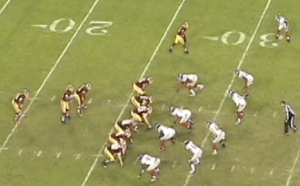
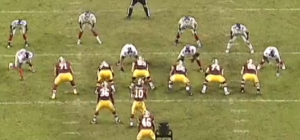

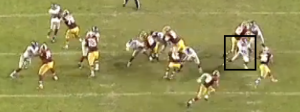
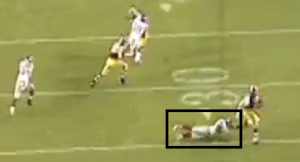



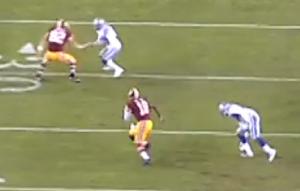
Recent Comments